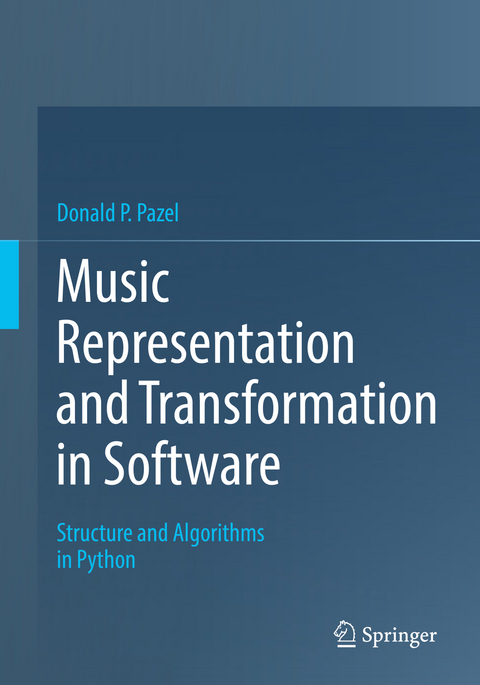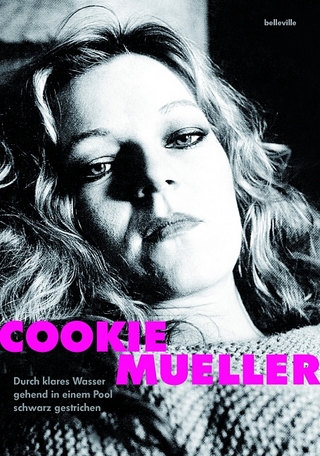
Music Representation and Transformation in Software
Springer International Publishing (Verlag)
978-3-030-97471-8 (ISBN)
The first part of the book focuses on software representation of the main elements found in music theory. Its objective is to provide direction to students on how to build a music software model from basic concepts and grow towards more complex concepts. Chapter by chapter, music concepts are introduced, and each is broken apart into related data properties and methods with the goal that by the end of this section, the reader will have developed a relatively complete library of music elements in software. The second part takes on the task of applying that foundation to the subject of "music transformations". The focus is on localized transformations, that is, transformations isolated to a few measures. After a general introduction, the discussion includes topics of pitch assignment, key change, melodic inversion, melodic shaping, harmonic transcription, retrograde, melodic search and dilation.
This textbook is designed as a principal or supplemental source for computer science, software engineering, and programming courses. It can also be used as a main textbook for advanced computer music courses or electronic music courses. Computer music software professionals interested in learning how to model the complexities of music theory artifacts, or music students who want to learn advanced programming techniques in their domain will also find the book helpful.
Donald P. Pazel is a computer scientist and software engineer who has worked on a wide diversity of software projects. He was a member of the computer music research team in the Mathematics Department at the IBM TJ Watson Research Center in New York. That work focused on MIDI-based composition software and real-time music modification. Various prototypes were developed during his time there, e.g., MusicSketcher, a prototype application that demonstrated a wide range of music transformational capability. He is also a musician with long-time experience in composition and piano performance. In this book, he develops music theory software based on his music experiences and knowledge of object-oriented and algorithmic programming in Python.
Part 1: Representation.- 1. Software Modeling and Object-Oriented Design.- 2. The Chromatic Scale and the Diatonic Foundation.- 3. Intervals.- 4. Modality, Tonality, and Scales.- 5. Time in Music.- 6. The Note and Note Aggregates.- 7. Chords.- 8. Instruments.- 9. Score Representation.- 10. Rendering Score to Midi.- 11. Variable Dynamics and Tempo.- 12. Further Representations.- Part 2: Music Transformations.- 13. An Introduction to Music Transformations.- 14. A Constraint Engine for Pitch Assignment.- 15. Shift: A Transform fKey Change.- 16. Reflection: A Transform for Melodic Inversion.- 17. Reshape: A Transform for Melodic Shaping.- 18. Harmonic Transcription: Preserving Melody Over Harmonic Change.- 19. Retrograde: Reversing a Melody.- 20. Melodic Search and Pattern Substitution.- 21 Dilation: Musical Expansion and Contraction.- 22. The Step Shift Transform andSequences.- 23. Final Thoughts.
| Erscheinungsdatum | 08.05.2022 |
|---|---|
| Zusatzinfo | XX, 333 p. 204 illus., 27 illus. in color. |
| Verlagsort | Cham |
| Sprache | englisch |
| Maße | 178 x 254 mm |
| Gewicht | 677 g |
| Themenwelt | Kunst / Musik / Theater ► Musik |
| Geisteswissenschaften ► Sprach- / Literaturwissenschaft ► Anglistik / Amerikanistik | |
| Geisteswissenschaften ► Sprach- / Literaturwissenschaft ► Literaturwissenschaft | |
| Mathematik / Informatik ► Informatik ► Software Entwicklung | |
| Schlagworte | Computer Music • MIDI • Music Programming • music representation • object-oriented programming • Python programming • Software engineering |
| ISBN-10 | 3-030-97471-5 / 3030974715 |
| ISBN-13 | 978-3-030-97471-8 / 9783030974718 |
| Zustand | Neuware |
| Haben Sie eine Frage zum Produkt? |
aus dem Bereich


